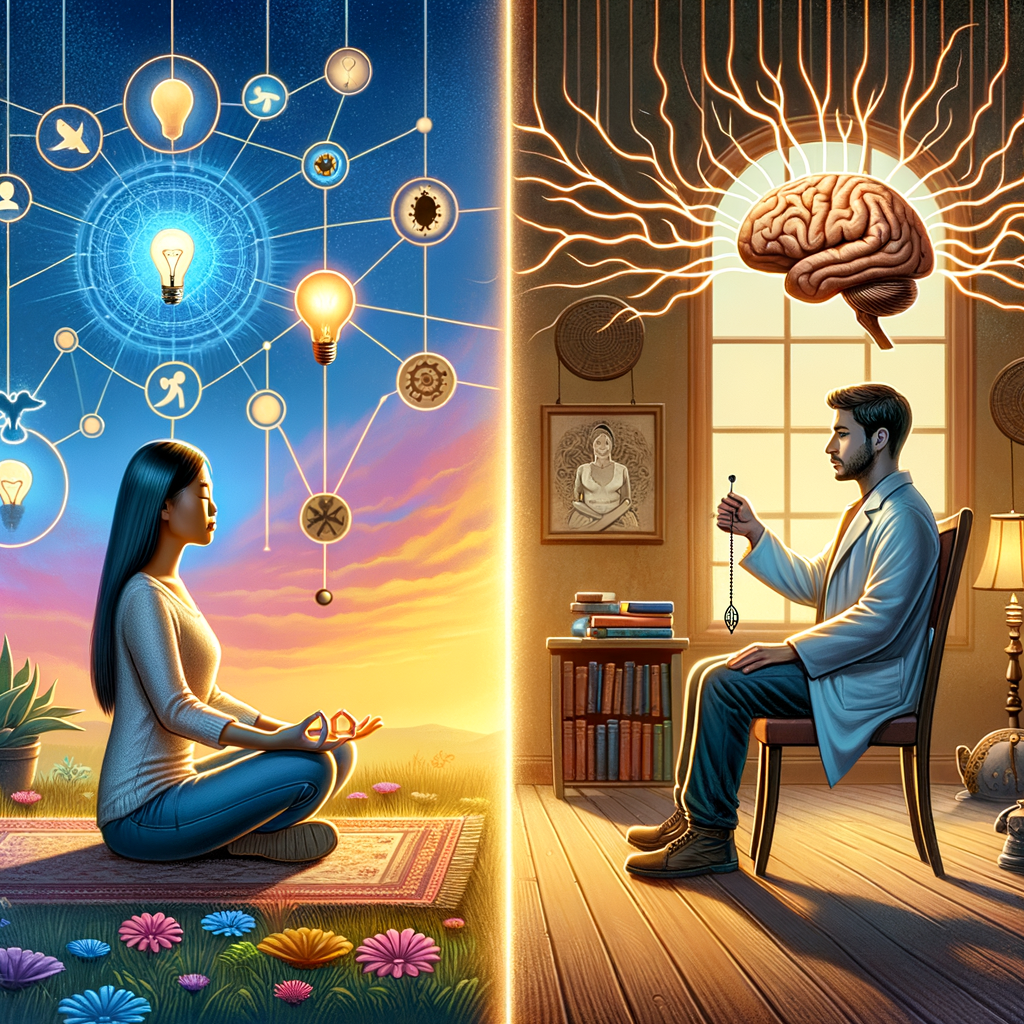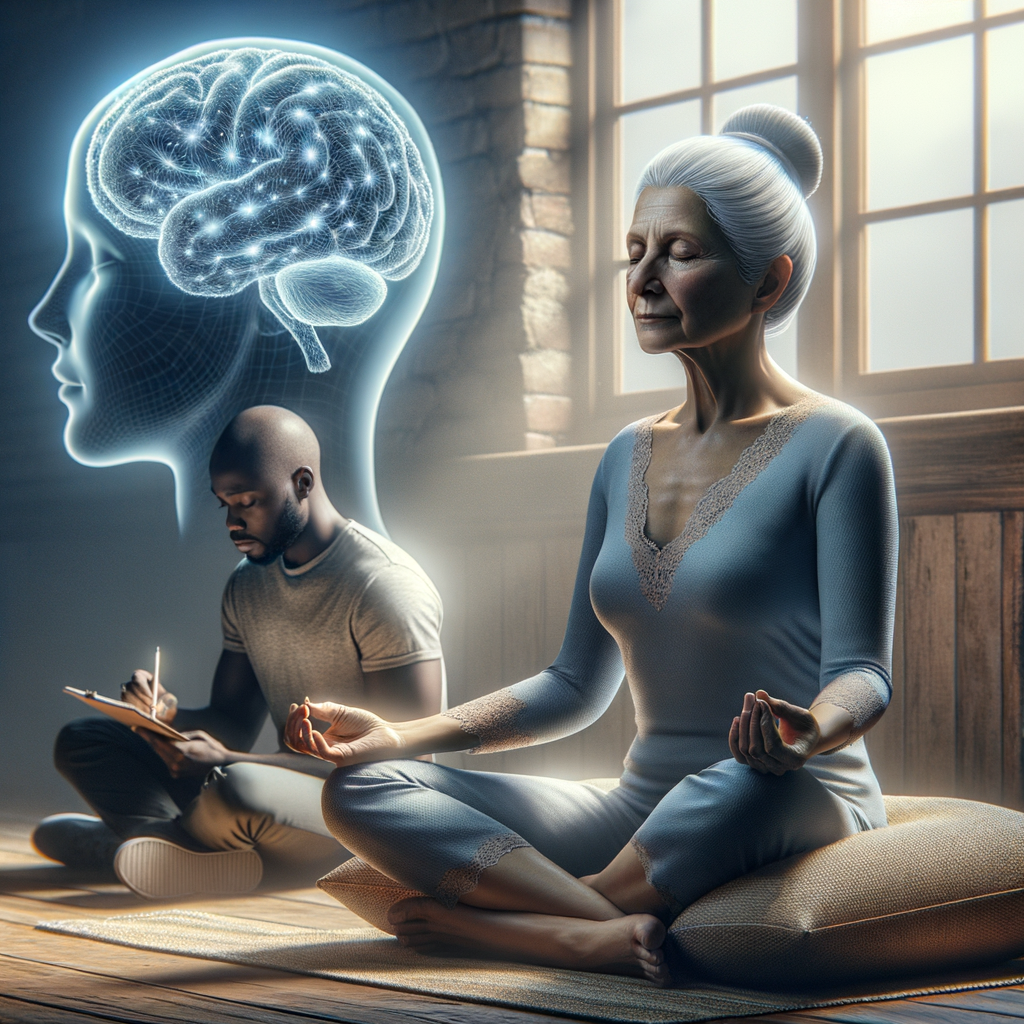Integrating Mindfulness Meditation and Hypnosis for Mental Health and Well-being
Discover how the amalgamation of mindfulness meditation and hypnosis can pave the way for improved mental health and overall well-being.
Understanding Mindfulness Meditation
Mindfulness meditation is a practice rooted in ancient traditions, particularly in Buddhism. It involves focusing one’s attention on the present moment in a non-judgmental manner. This practice encourages heightened awareness of thoughts, emotions, and bodily sensations.
Core Principles of Mindfulness Meditation
- Present-Moment Awareness: Engaging fully with the here and now.
- Non-Judgment: Observing thoughts and feelings without labeling them as good or bad.
- Acceptance: Acknowledging feelings without resistance.
By practicing mindfulness meditation regularly, individuals report significant reductions in anxiety, stress, and symptoms of depression.
The Role of Hypnosis in Mental Health
Hypnosis, often misunderstood, is a therapeutic technique that facilitates focused attention and heightened suggestibility. It is commonly employed to address various psychological issues. Clinical hypnosis involves guided relaxation and intense concentration, aiming to improve one’s mental health.
Key Benefits of Hypnosis
- Stress Relief: Induces a state of relaxation, which can significantly alleviate stress.
- Behaviour Modification: Effective in altering habits such as smoking or overeating.
- Enhanced Focus: Aids in improving concentration and cognitive ability.
Research indicates that hypnosis can effectively reduce chronic pain, manage emotional distress, and enhance one’s coping skills.
The Synergy of Mindfulness Meditation and Hypnosis
While mindfulness meditation and hypnosis can be beneficial individually, their integration creates a powerful approach to mental health. Both practices share common threads, such as promoting relaxation, increasing self-awareness, and facilitating emotional regulation.
Combined Benefits
When combined, mindfulness meditation and hypnosis provide:
- Deep Relaxation: Both practices activate a relaxation response that lowers stress hormones.
- Improved Mental Clarity: Enhances the ability to process thoughts clearly.
- Greater Emotional Resilience: Provides tools to better manage negative emotions.
- Accelerated Healing: Facilitates a holistic approach to mental and physical well-being.
Practical Steps to Integrate Mindfulness and Hypnosis
Integrating these practices into your daily routine can be straightforward and beneficial. Here are structured steps to achieve this integration:
Step 1: Dedicate Time
Set aside 10-20 minutes daily for mindfulness or hypnosis practices. Consistency is key for reaping long-term benefits.
Step 2: Create a Calm Environment
Find a quiet, comfortable space free from distractions.
Step 3: Begin with Mindfulness
Start with mindfulness meditation to ground yourself. Focus on your breath and observe your thoughts without judgment.
Step 4: Transition into Hypnosis
Once you feel centered, transition into a guided hypnosis session. You may use literature or recordings designed for this purpose.
Step 5: Reflect and Journal
After your session, take a few minutes to reflect on your experiences and journal about any insights or emotions that arose.
Conclusion: A Holistic Pathway to Well-being
Integrating mindfulness meditation and hypnosis presents a unique opportunity to enhance mental health and cultivate well-being. This dual approach encourages not just symptom management, but also promotes deeper emotional understanding and resilience. Whether you are seeking to reduce anxiety, combat stress, or simply wish to improve your overall mental state, this integrative method offers a promising way forward.
There you have it… See what works for you…
Campbell M Gold
To Create Health, Wealth, Success, and Longevity through the Power of Your Subconscious Mind, Visit: Campbell M Gold.com
Visit The Store and see what else can be of help


















